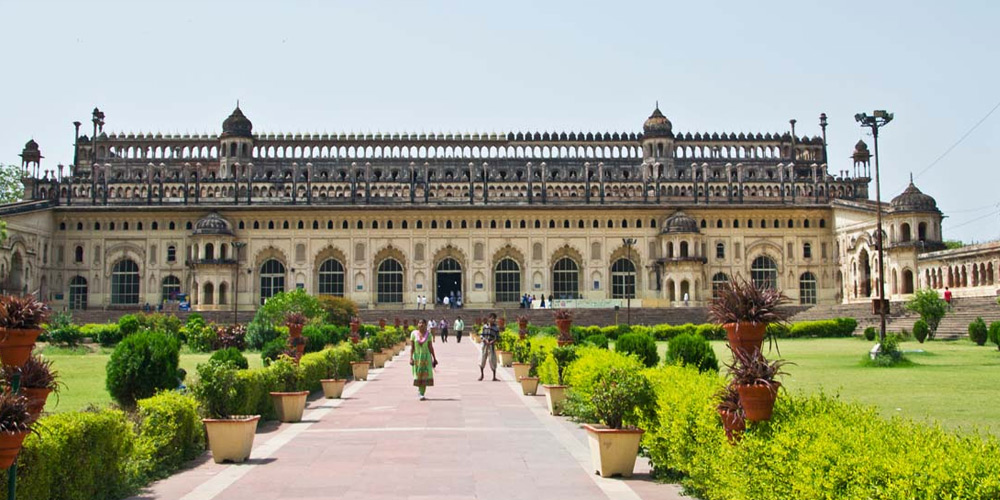Lucknow, that glittering gemstone of India’s regal past throws open the casements on the fantastic pursuits of the Nawabs, who once served as the provincial governors of the Mughals and then became their envy for their luxurious ways.
The glitter and the opulence of courtly life under the Nawabs of Awadh illuminated only a short chapter in the annals of Mughal rule in India. But from 1722 to 1856 their lifestyle pursuits transformed their bastion into one into one of the subcontinent’s most glamoros and highly sophisticated capitals at the time.
Adding fuel to the fire of the envy of the Mughal court was the fact the prosperity of Lucknow and its cultural richness became a magnet for the highly accomplished poets and writers, craftsmen, actors and courtesans, seeking the quality of patronage a dying Mughal Empire in Delhi could no longer offer.

When the Nawabs of Awadh moved their base from Faizabad to the Hindu city of Lucknow they slowly converted this quite riverside town by the Gomti into a pulsating cultural hub of many delights. Even today a visitor to the city can get a rush of that old courtly ‘andaz’ or vibe of gentility, and warm hospitality hidden under the impurities of today’s hectic brash world.
It was in 1775 that Nawab Asaf-ud-daula, on arriving in Lucknow from Faizabad started setting in roots of an Indo-Persian culture, marked by the most refined qualities of learning, art, entertainment attire, etiquette and lifestyle and connoisseurship. Paeans have been sung of the amazing architecture of Lucknow, the lilting nuances of the Urdu language– a most refined version of communication, the astonishing delights of its performing arts, crafts and cuisine. It has long been acknowledged that the Awadhi Nawab’s set the gold standard for style and impeccable refinement.
It was not just the court that reflected this addictive ambience of gentility and artistic pursuits. So strong was the pull of this cultural attitude it even trickled deep into the lives of the common people.

Half measures were never on the barometer of the Nawabs seeking an enhanced lifestyle in their pursuit of the most refined cultural experiences. As you wander around the spiritual and temporal spaces of Lucknow’s architecture you will discover how the perfect fusion of Persian and Indian styles adds that exuberant touch to the city’s skyline. The nawabi dazzle, of landmark structures such as the arresting and highly ornamental Rumi Darwaza, Bara Imambara with its Asafi Mosque, Chhota Imambara, Shah Najaf Imambara, Nawab Wajid Ali Shah’s massive Kaiserbagh Palace complex, though now in ruins as is the Dilkusha Palace, is unmistakable.
Amidst all this Nawabi plenitude are reminders of a more painfully tragic past–Beaming out their signature vibe of the city’s colonial days are the British Residency, besieged by the Indian freedom fighters during the Mutiny of 1857, and La Martiniere— the exotic French palace set up by a French mercenary who wangled himself into a powerful position in the city in those times. You should definitely visit the Residency Museum and Sound and Light Show for a deep dive into Lucknow’s most trying times during its tryst with the British colonists.

Amongst the myriad experiences of the highly material and metaphysical elements of the Nawabi cultural profusions you should aim to explore are also showcased at the annual Lucknow Mahotsav. The highpoints of the festivities are the sher-ur-shairi and ghazal and qawwali sessions, kathak recitals. Were you aware that Lucknow’s last Nawab Wajid Ali Shah, who was deposed and exiled by the British as a great patron of the arts and an aesthete was no mean poet and could even dance the kathak? Pop-up stalls at the festival showcase a wide selection of Lucknavi arts and crafts and culinary delights.
The culinary traditions of the Nawabs of Lucknow have long been passed into legend. Their timeless appeal is richly evident in their burgeoning popularity in menus in the city restaurants and home kitchens. Dum Pukht (food in a tightly sealed deg, cooked in its own juices over a slow burning fire) is an enduring classic for gourmands around the world. And the famous Awadhi dastrakhwan, a sumptuous banquet of tastes and flavor can tempt even the most untutored palate. Unmissable treats of kebabs and curries, fragrant biryanis, breads and desserts await at street corners of Chowk, Nakkhas and Aminabad, the densest busiest bazaar in the old city.

Thankfully the dying textile traditions that were symbols of the elegance and culture of the Nawabi courts have seen a great revival. SEWA, an NGO, has played a pivotal role in preserving the fabulous legacy of the filigree hand embroideries of chikankari work. Another wonderful legacy from the court of the Nawabs has been zardozi work (brocade), which now walks the fashion ramps all around the globe.
Get a hands-on experience of old Nawabi leisurely pastimes still prevalent in the old city. From pigeon competitions to kite flying to chess playing over a hookah are still kept alive in these parts. If you want to try your hand at a Nawabi style hookah (sheesha), head for one of the popular lounge restaurants or sheesha bars in the new city –or better still in the atmospheric environs of Nazirabad, Akbari Gate and Chowk.
The calendar of cultural festivals is now playing an important role in reviving the ethos of the Lucknawi Tehzeeb (mannerisms) and Nafasat (refinement) the bedrock of the life and cultural legacy of Lucknow. These offer the perfect opportunity for visitors to take home more immersive experiences of the legendary city of the Nawabs and its fabled tradition of hospitality.


